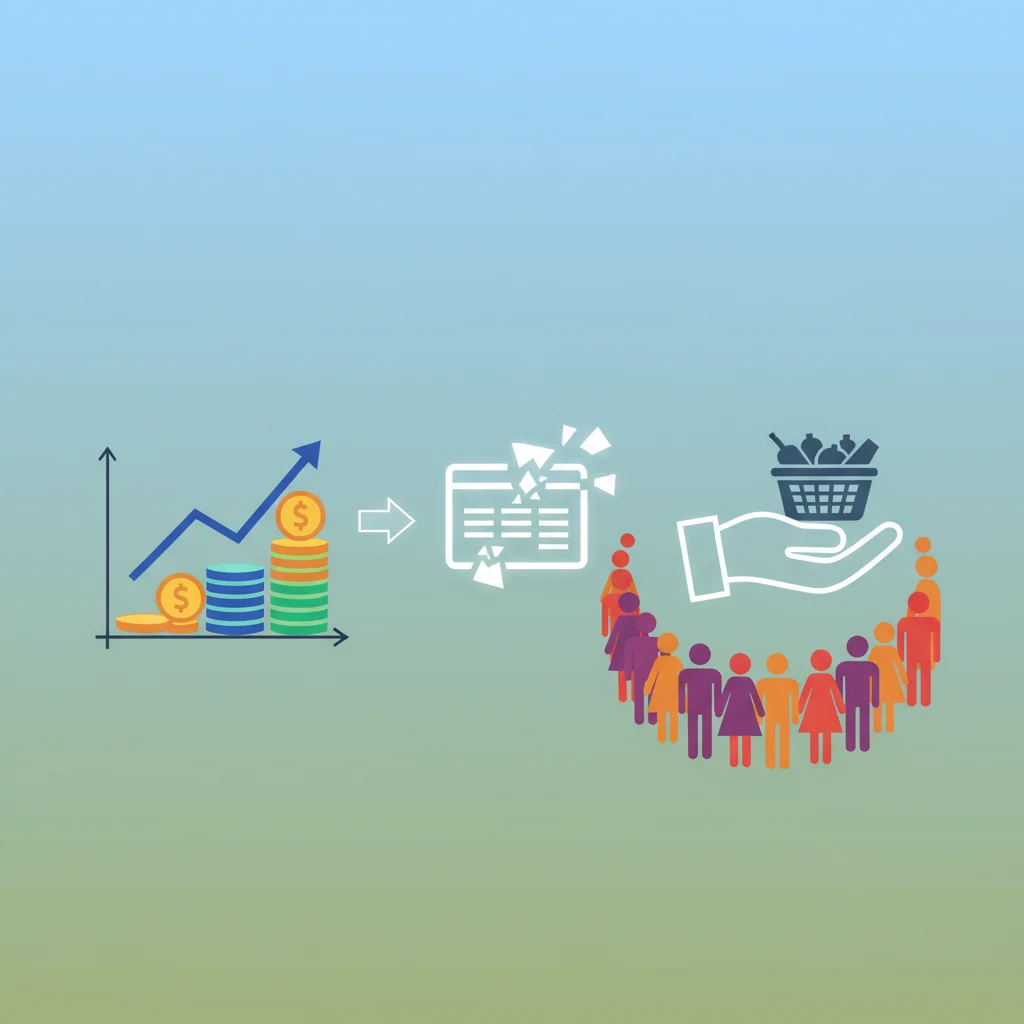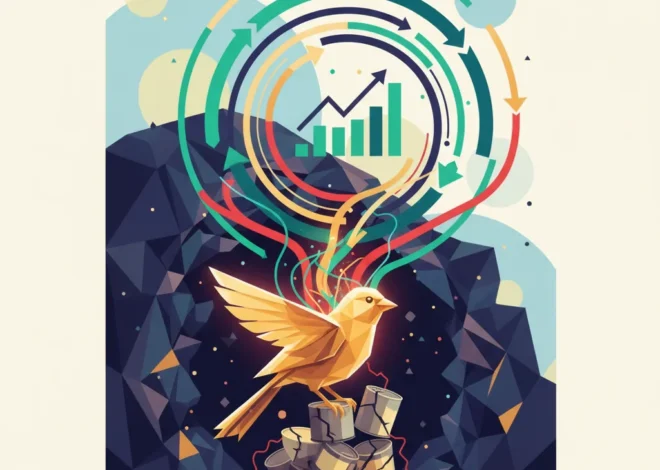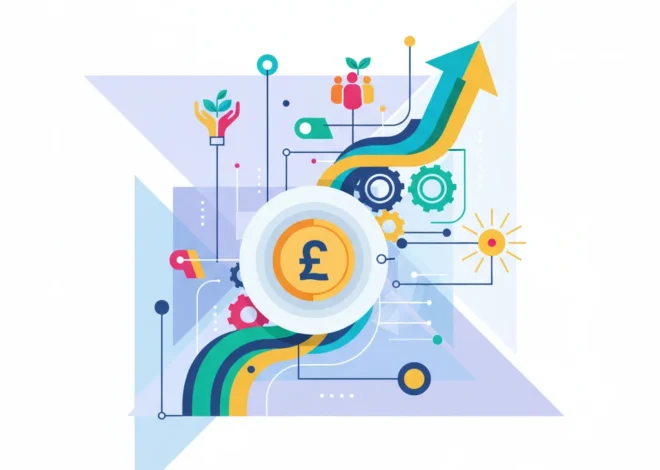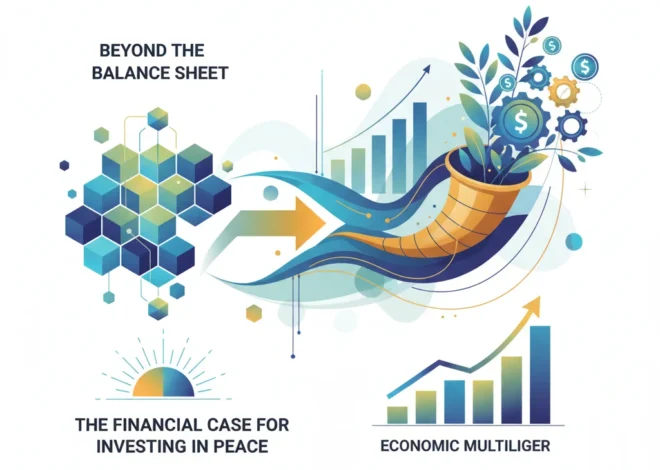
Beyond the Balance Sheet: Why Foodbank Queues Are a Critical Indicator for the Modern Economy
In the quiet heart of the UK, a stark economic reality is being measured not in stock tickers or quarterly earnings reports, but in meals. A single charity, Feed the Hungry, is now sending out 17,000 meals every week to foodbanks across the country. This isn’t just a headline; it’s a critical data point. It’s a leading indicator of profound stress within the household economy, a stress that sophisticated financial models often overlook until it’s too late. As the charity warns that “thousands will go hungry this Christmas without help,” it’s a sobering reminder that for investors, finance professionals, and business leaders, the distance between a foodbank queue and the stock market floor is shorter than we think.
The traditional view separates philanthropy from finance, social issues from economic strategy. This is a dangerously outdated perspective. In today’s interconnected world, widespread food insecurity is not merely a social tragedy; it is a direct reflection of macroeconomic pressures and a harbinger of future economic volatility. Understanding the drivers behind this growing demand is essential for anyone whose success is tied to the health of the broader economy.
The Economic Anatomy of Hunger: A Real-Time Market Barometer
The surge in demand for food aid is not happening in a vacuum. It is a direct and predictable consequence of a confluence of powerful economic forces that have squeezed household finances to a breaking point. For professionals steeped in the language of economics and finance, these foodbank statistics are the real-world manifestation of abstract concepts we discuss daily.
The primary driver is, of course, persistent inflation. While central banking institutions grapple with taming price rises through monetary policy, the lagging effect on consumers is severe. When the cost of essentials like energy, housing, and food outpaces wage growth, disposable income evaporates. According to the UK’s Office for National Statistics, while inflation has eased, food prices remain significantly elevated compared to pre-pandemic levels, placing an ongoing strain on the lowest-income households. This isn’t just an economic theory; it’s the reason a parent chooses between heating their home and putting a meal on the table.
This situation creates a fragile consumer base, which in turn poses a risk to corporate earnings and, by extension, the stock market. A population struggling with basic necessities is not a population driving growth in retail, leisure, or technology sectors. The lines at foodbanks are, in essence, a measure of collapsing consumer confidence and purchasing power at its most extreme.
To illustrate the correlation, consider the key economic pressures and their direct impact on household financial health.
| Economic Indicator | Impact on Household Finances | Resulting Social Indicator |
|---|---|---|
| High Inflation Rate | Decreased purchasing power; wages do not keep pace with the rising cost of goods and services. | Increased reliance on foodbanks for essential groceries. |
| Rising Interest Rates | Higher borrowing costs for mortgages, loans, and credit cards, reducing disposable income. | Families forced to choose between debt servicing and essential spending. |
| Stagnant Real-Wage Growth | Inability to build savings or a financial cushion for emergencies. | Greater vulnerability to unexpected expenses, pushing more people toward crisis support. |
| Energy Price Volatility | Unpredictable and high utility bills consume a larger portion of the monthly budget. | The “heat or eat” dilemma becomes a stark reality for thousands. |
These are not isolated issues. They form a complex web of financial pressure that traditional economic reports can fail to capture in human terms. The work of charities like Feed the Hungry provides a granular, real-time view of the true state of the economy’s foundation. From Napkin Sketch to Market Dominance: The Financial Trajectory of EasyJet at 30
From Corporate Handouts to Strategic ESG: The Evolving Role of Business
Faced with this reality, the business and investment community has a choice. The old model of arms-length corporate social responsibility (CSR)—an annual donation, a press release, and a move on—is no longer sufficient. The modern paradigm is Environmental, Social, and Governance (ESG) investing, a framework that recognizes that long-term financial viability is inextricably linked to a company’s impact on the world.
Addressing food insecurity falls squarely within the ‘Social’ pillar of ESG. A company that actively works to support its community’s basic needs is not just being altruistic; it is engaging in strategic risk management. Social instability, driven by economic desperation, is a significant threat to business operations, supply chains, and market stability. By investing in community resilience, companies are, in effect, investing in their own long-term operating environment. This perspective reframes charitable support from a cost center to a strategic investment in a stable and prosperous economy—the very economy that allows businesses and the stock market to thrive.
Furthermore, a strong ESG profile is increasingly a factor in attracting capital. Investors are growing more sophisticated, looking for businesses that are not only profitable but also sustainable and socially responsible. A proactive stance on critical issues like food poverty can enhance brand reputation, improve employee morale and retention, and ultimately appeal to a broader and more loyal investor base.
The Fintech Revolution: Engineering a More Efficient Response
While the problem is rooted in macroeconomics, the solutions are increasingly being shaped by financial technology (fintech). The same innovation that powers high-frequency trading and digital banking can be harnessed to tackle social challenges with unprecedented efficiency and transparency. This is where the worlds of finance, technology, and social impact converge.
The traditional model of philanthropy is often inefficient, with high overheads and a lack of transparency. Fintech offers a powerful toolkit to change this:
- Digital Banking and Micropayments: Modern banking apps are integrating features that allow users to “round up” their purchases and donate the difference, turning everyday transactions into a continuous stream of micro-support. This democratizes giving and creates more stable funding for charities.
- Blockchain for Transparency: One of the biggest challenges in charity is ensuring donations reach their intended recipients. Blockchain technology offers a potential solution. A distributed, immutable ledger could track a donation from the moment it’s given by a corporation or individual to the point a meal is delivered by a foodbank. This level of transparency could unlock billions in institutional and private investing into the social sector by building unprecedented trust.
- Data Analytics for Impact: Fintech isn’t just about moving money; it’s about leveraging data. Non-profits can use data analytics to identify areas of greatest need, optimize their supply chains, and measure their impact with the same rigor as a publicly-traded company. This data-driven approach is crucial for demonstrating ROI to major donors and corporate partners.
The table below contrasts the old and new paradigms of giving, highlighting the transformative potential of financial technology.
| Feature | Traditional Philanthropy | Fintech-Enabled Social Impact |
|---|---|---|
| Donation Method | Manual (cash, check, bank transfer) | Automated (micropayments, app integrations, crypto) |
| Transparency | Limited; relies on annual reports | Potentially real-time and fully auditable via blockchain |
| Efficiency | Higher administrative overhead | Lower transaction costs and streamlined processes |
| Donor Engagement | Periodic and passive | Continuous, interactive, and data-rich |
| Impact Measurement | Anecdotal or based on broad estimates | Precise, data-driven, and verifiable |
Investing in Solutions: Beyond Charity to Systemic Change
Ultimately, the most powerful role for the financial world is not just to fund the response to the crisis, but to invest in the solutions that prevent it. This requires a shift in mindset—from seeing food insecurity as a problem for charity to viewing its eradication as an investable opportunity with long-term economic returns.
Impact investing is a growing field where capital is directed toward ventures that generate both a financial return and a positive social outcome. This could include:
- Agri-Tech Startups: Investing in companies developing technologies to reduce food waste, improve crop yields, and create more resilient food supply chains.
- Supply Chain & Logistics Innovation: Funding businesses that are creating more efficient ways to get surplus food from farms and retailers to organizations like Feed the Hungry, a classic logistics problem that technology can solve.
- Financial Inclusion Fintechs: Supporting companies that provide access to fair and affordable banking and credit for low-income populations, helping them build financial resilience and avoid the debt cycles that lead to poverty.
This is not charity; this is smart, long-term economics. A well-fed, financially stable population is a more productive workforce, a more vibrant consumer market, and the foundation of a stable society. By investing in the systems that ensure food security, we are underwriting the future of the entire economy. A New Pour: Can a Governance Guru Reignite Growth at Spirits Giant Diageo?
Conclusion: The Bottom Line Is Human
The fact that a single charity is distributing 17,000 meals a week is a testament to human generosity. But for those in finance, business, and investing, it must also be a blaring alarm. It signals a fundamental weakness at the base of our economic pyramid. Ignoring it is not an option.
We must learn to read these social indicators with the same urgency we apply to market data. We must leverage the incredible power of our financial systems and technologies not just to generate wealth, but to build resilience. The ultimate health of the stock market, the stability of our banking sector, and the future of our economy depend on the well-being of the people who power it. The line at the foodbank is not separate from the bottom line; it is the most human and most important bottom line of all.


